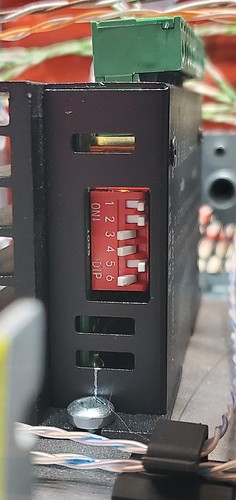How do you have your dip switches set on the TB6600 stepper drivers?
Below is how @Trevor has his dip switches as per this thread:
My power supply is Mean Well LRS-200-24 — 200W 24V
Would I be presumed OK if I did mine the same as Trevor?
EDIT: I just noticed his power is 12v and mine is 24v. So I am guessing mine will be different.
